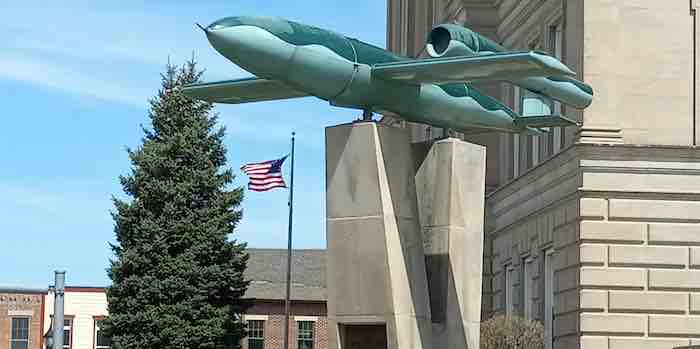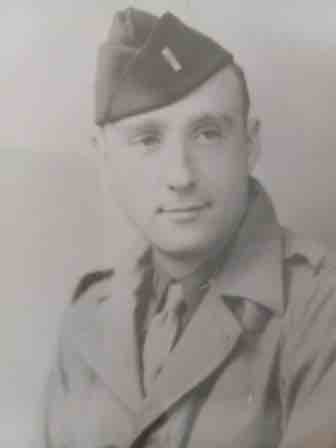By Dr. Bruce Smith ——Bio and Archives--April 10, 2023
HeartlandLifestyles | CFP Comments | Reader Friendly | Subscribe | Email Us

One of the best things we can do to improve our ability to see and notice the things around us is to learn to use a real SLR camera. I had a Mamiya Sekor 1000DTL. There was no auto button. The camera only did what I made it do with the meter, aperture, shutter speed, focus, strobe, and filters I had chosen. Push the shutter button and whatever the result, good or bad, it was my fault. What a real camera taught me to do was to look at everything inside the frame. The meter only reads the average light, so it’s important to notice if there are light or dark places. Is the subject backlit? Are the shadows too dark? Is it cloudy? Is it diffused light? When you get the print, the credit and the blame are only your own. Nobody else pushed the button.
The bad habit of tunnel vision can grow in all of us. We often get used to seeing what we see without taking the time to see if anything changed.
If we haven’t been this way before, what do we see? Does it fit old patterns? Is it unique? What is there today we might not see there tomorrow? Is it beautiful? Does it teach us anything?
If we’ve been this way before, what we really should look for is if anything has changed. Why did it change? Was it change for the better or for the worse? What is beautiful today?
Look closely and scan the horizon, too. Be interested in lots of things, even if you can’t devote lots of time to them. Delight in the joy of discovery and the joy of comfortable routine.
So I try to be observant. This past week I was in a small county seat town in Indiana. It’s Greencastle, county seat of Putnam County. It’s a couple of counties southwest of Indianapolis and just north of the old National Road, US 40. US 231 goes through the middle of downtown. I went toward the taller buildings and came to an intersection by the court house. On the corner of the square nearest me was the familiar sculpture by E.M. Viquesney, the Spirit of the American Doughboy. Copies of this sculpture decorate court house squares and memorial parks across the country.
The doughboy is authentic from helmet to shoes. His gas mask sits correctly on his chest, ready at a moment’s notice. It’s the 1903 Springfield rifle he carries, with bayonet fixed. The texture on the wool uniform and the puttee leggings complete his outfit. He’s crossing a barbed wire field of attack, just as he did so often in the Great War. My paternal grandfather was one of those doughboys, so I always think of him and honor his service when I see the monument.
Up ahead, however, is something very different. It’s the color I notice first. Underneath it’s an odd sky blue, and above it’s an equally odd green. A wavy line runs down the side to separate the colors. It’s rather cigar-shaped, has very stubby wings cut off straight, horizontal stabilizers, and a vertical tail section with a rudder. On top at the rear there is a tube nearly half as long as the craft itself and painted in the same scheme. There’s no propeller except for what looks like a toy one on the nose. It must be a jet engine on top, but it’s not like one you’d see today.

Support Canada Free Press

I recognize it immediately, out of place as it is here in Greencastle. It’s a German V-1 buzz bomb from World War II. Now there’s something you don’t see every day! They were an early cruise missile and could be aimed, but only in a crude way. The Germans fired more than 9,000 of them at southeast Britain during the war, with the first of 2,400 falling on London on June 13, 1944. More than 6,000 people were killed across England as a result, and nearly 18,000 were injured.
With an overall weight of 4700 lbs., the bomb alone weighed 1870 lbs. The little propeller in the nose attached to an odometer that could be set so that when the V-1 arrived over the target, a mechanism would shut down the engine so it would plunge to the ground below. Those 2,400 random bombs of nearly a ton each falling in an urban center caused widespread panic and renewed evacuations. For a time in 1944, American air crews could not visit London due to the danger from these weapons.
There was a family connection to the V-1, as it turned out. When I interviewed my dad for The War Comes to Plum Street, he told the story of seeing one shot down over Southampton in June of 1944, as he was preparing to cross the Channel. A Spitfire came up close behind and blew it up. As it turned out, the pilot was too close. The explosion consumed the plane and cost the pilot his life. This happened on the first day V-1s were fired at England in an effort to disrupt the cross-channel invasion. It wasn’t his last encounter with Hitler’s secret weapons.

Drafted in 1942, my dad went to training camp in Texas to learn how to operate antiaircraft weapons, commonly called “ack-ack.” He rose quickly through the ranks and became gunnery sergeant of Battery B, 448th AAA. When an opportunity arose to go to OCS, he took it and became an officer. Then he married my mother, and not long after that he was on the way to England on a rather nice troopship, the Queen Mary.
In England he did his work and kept his eyes open. An introverted farm boy, but always a keen observer and interested in almost everything, he noticed and remembered what he saw there and told us about it many years later. On D+3, June 9, 1944, he accepted an offer to ride across the channel in a C-47 carrying replacement fuel. In that way he saw from the air the D-Day invasion fleet, the greatest fleet ever assembled. It returned with German prisoners and brought him safely back to the south of England. That’s where he was on June 15 when he saw the Spitfire pilot get too close to the Buzz Bomb. June 15 was D+9, the day he crossed the Channel for the second and last time.
My dad transferred from near Paris to Verviers, Belgium in January of 1945. This put him and his new ack-ack unit down range from the launch site for V-1 Buzz Bombs and V-2 rockets to the east in the Germany. His battery set up next to British ack-ack units which also used the Bofors 40mm gun. During January and February and the first part of March, the farm boy from New Castle, Indiana, had the job of firing on Hitler’s secret weapons launched against England. Word is they got a few.

The Germans surrendered on May 7, 1945 and the cleanup began. A Greencastle, Indiana, a naval reservist named J. Frank Durham thought it would be a good idea to have a souvenir of the war in his home town. Hundreds of objects of every description sat at the Stump Neck Naval Annex in Maryland where Durham had been stationed, awaiting disposal or transfer to museums. Most counties and museums settled on tanks or artillery, but Durham must have thought the Buzz Bomb stood out from the ordinary. At some point he told the right person, “Let’s have one of those for my home town!” The memorial was dedicated on Armistice Day, 1948. For years, Durham walked past it on the way to his law office on the square in Greencastle. I feel a little sorry for those who don’t even know what it is.
So when I’m in Greencastle I make it a point to go past the court house and look up at the V-1. I always smile and squint an eye just a little, enjoying the irony of seeing one of Hitler’s secret weapons on a limestone base in this quiet Hoosier town. I say to myself, “Well, there’s something you don’t see every day! It’s a V-1 Buzz Bomb! Pop had a crack at those.”
View Comments
Dr. Bruce Smith (Inkwell, Hearth and Plow) is a retired professor of history and a lifelong observer of politics and world events. He holds degrees from Indiana University and the University of Notre Dame. In addition to writing, he works as a caretaker and handyman. His non-fiction book The War Comes to Plum Street, about daily life in the 1930s and during World War II, may be ordered from Indiana University Press.